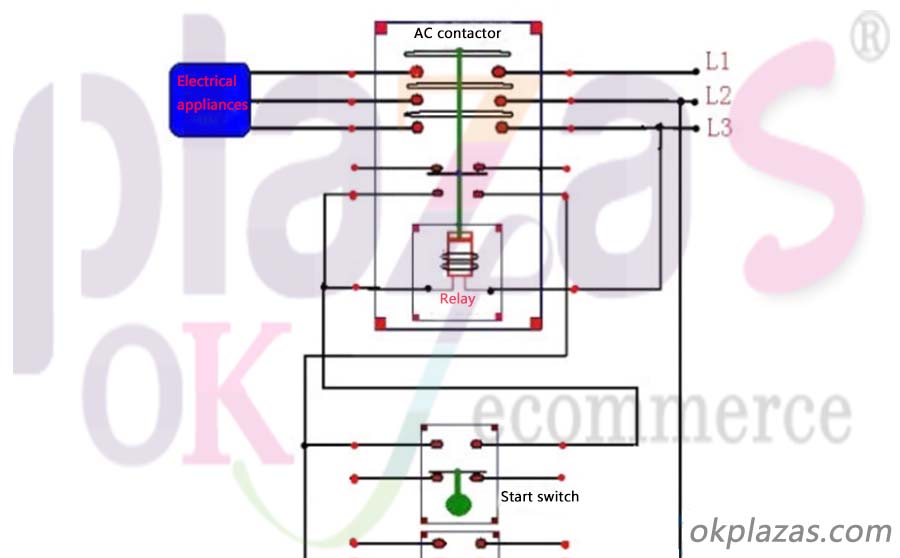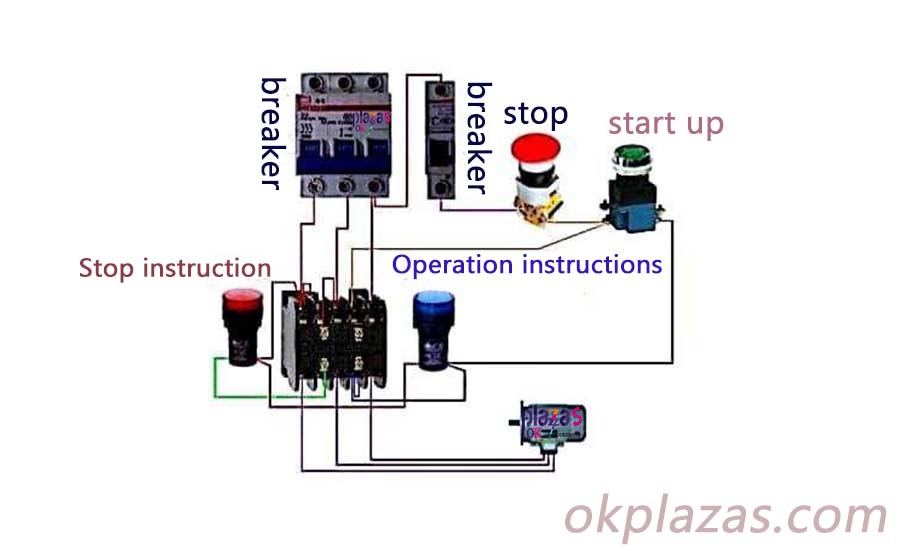380V AC contactor installation physical wiring diagram
380V AC contactor installation physical wiring diagram
Wiring diagram of 380V AC contactor
In fact, the power side of the AC contactor is mainly connected to the three-phase power supply when wiring. Generally, the contactor shell is marked with 1L1, 3L2, 5L3, or directly L1, L2, L3. . So just remember that this is connected to the power supply, and the other load side of the AC contactor needs to be connected to the load. It is also marked on the shell, usually 2T1, 4T2, 6T3, or directly T1, T2 、T3 is like this, please see the actual picture below for the specific situation.

380V AC contactor wiring method
Under normal circumstances, the three-phase contactor uses 8 points, of which three are input terminals, the other three are output terminals, and the remaining two are control points. It is easy to see that the input and output are arranged in a corresponding manner, as shown in the figure above. If you want to add self-locking protection to the 380V AC contactor, you need to connect the wire to the control point from a terminal of the output point.
Before talking about how to wire, we need to have a general understanding of the working principle of AC contactors. It uses an external power supply to add to the coil, so electromagnetic field phenomena will occur. The power-on performs the pull-in action, while the power-off is the contact opening action. After knowing the principle, you need to figure out where the contacts of the external power supply are. In fact, they are the two contacts of the coil, usually located below the AC contactor and on one side.
As a result, the other inputs and outputs of the contactor are generally in the upper position. The place to pay attention here is the specific voltage (220V or 380V) of the external power supply is marked, and pay attention to the contact point. Whether it is normally open or normally closed, if there is a self-locking control, you need to set the circuit according to the circuit schematic diagram. The wiring diagram of the 380V AC contactor is shown below.

First, connect the three phases of the power supply to the main contacts L1, L2, and L3 of the device in turn, and then connect three wires from the T1, T2, and T3 of the contactor to the three terminals of the motor. The line is the main circuit. For the control circuit wiring, a wire needs to be drawn from L1 of the device and connected to the stop button (should be normally closed, and normally open for start), and then connect from the stop button to the end of the start button and the auxiliary contact of the contactor One end. Finally, the other end of the start button is connected to the other end of the auxiliary contact (this part is the self-locking function), and then the line from this end is connected to the coil A1, and the coil A2 is connected to the L2 or L3.
◆3 and 5 are connected to three-phase power (main circuit part);
◆4 and 6 are connected to three-phase motors;
◆A1 and A2 are the coil ends of the 380V AC contactor, which need to be connected to the control circuit. By controlling this coil, some motors on the control circuit can be realized;
◆13 and 14 represent auxiliary contacts, NO represents that normally open is in an open state when there is no power, and when it is energized, it is in a closed state. It is placed in the control circuit part to play a self-locking role (connected in parallel to the start button) to achieve the purpose of continuous operation.
380V AC contactor physical wiring diagram
According to the following figure, you can see the corresponding circuit composition configuration:

1. A 3P (three-pole) circuit breaker for control;
2. A green start button (it is composed of a pair of normally open contacts 3-4);
3. A stop button (it is composed of a pair of normally closed contacts 1-2);
4. Two 380V indicator lights;
5. A 380V AC contactor that pulls in the coil.
If the wiring is performed according to the above configuration, a simple starting, locking and stopping control circuit of a three-phase asynchronous motor can be easily realized.
The above is the physical wiring diagram of 380V AC contactor installation, I hope it can help everyone.You can log in to the okplazsd.com motor mall to check the contactor related product information, welcome to email: [email protected] for consultation, and you can also contact WeChat customer service +86-13689242098 online for product consultation!





